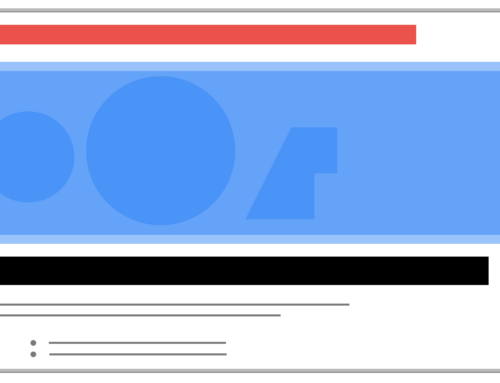What’s a Gemba Walk?
If you want Continuous Improvement, you need to get away from your desk every day and spend a lot of time with your people. You need to go on a Gemba Walk! Going on a Gemba Walk is a Lean phrase that denotes the action of going to the actual place where the work is done in order to ask questions, understand the work and the processes, and to learn.
Gemba Meaning
Gemba means “the place where something happened.” Additionally, in the manufacturing sense it means “the place where the work occurs.”
If a reporter in Japan is reporting from the scene of the crime, then they’re going to say, “I’m reporting from the Gemba.”
The Gemba’s just “a physical place where something is happening.”
Gemba for a Lean Leader
What does Going to the Gemba mean for a Lean Leader? It means one thing—for you to understand what’s going on in your company, you need to get out of your chair. Certainly it’s that simple.
If you’re doing the old 1980’s, Six-Sigma thing where you’re gathering a bunch of data and doing spreadsheets at your desk all day—that’s just not going to work. That’s not how we get Lean ingrained into our company. Therefore, that’s not how we get our people engaged in process improvement.
So, you’ve got to get away from your desk, every day and spend a lot of time with your people where the work is happening at the Gemba. Consequently, here’s how to make Gemba part of your daily life:
Schedule a Gemba Walk
Firstly, put a Gemba walk on your daily calendar as part of your Daily Standard Work. Just put it in your Outlook calendar, your Gmail calendar… whatever, and send yourself a little invite for 9:00 every day—you’re going to go for a Gemba Walk.
Futhermore, I would suggest an hour, at least, for your Gemba Walk, and hopefully you’re doing this multiple times during the day and it’s just part of who are, and how you do things.
But for those of you who are just getting started with Lean, go ahead and give yourself a calendar invite. The nice thing about that is you can invite other people to come, right? You can have your other managers, your leaders… subsequently, you can let the people in the area that you’re going to visit know you’re on your way. And they can be ready to see you and won’t be surprised.
Purpose of Kaizen
You have to have a purpose for your Gemba Walks. You don’t want to do the old “Management by Walking Around.” Likewise, just going around, looking at things—isn’t really productive, nevertheless, it doesn’t lead to any results.
If you have a purpose, for example, 5S. (Sort, Set in Order, Shine, Standardize, and Sustain). We’re going on a Gemba Walk, we’re looking for 5S opportunities. How do we get more organized, how do we get more efficient?
You can do waste walks—where you’re looking for motion wastes, overproduction, waiting waste. Those focuses will give you—and the people on the Gemba Walk with you—something to look for and then you can keep track of everything you see and be very specific about it.
Another Gemba Walk that I really like, and you should do this at least once a week, is the safety walk. You should be going through your areas looking for safety hazards and ways to improve safety for your team and your people.
People
This is important in two ways. One, you have the right people on the Gemba Walk—the people that are actually there to support the organization or the team that you’re observing. The second one is the people that are doing the work. You really need to talk to these people. You can’t stand back and observe them—you want to engage with them.
Ask them, “How are things going?”, “I noticed you missed your goal last hour. Why did you miss it? What are we doing about it? How can I help you?”
Any of those conversations will lead to a deeper understanding of what’s actually happening, and it will make the people you’re talking to more willing to be open with you and share with you the things that are bothering them or preventing them from being productive—or as productive as they want to be.
Continuous Improvment
A lot of times, while you’re talking to your people, you’ll get great ideas. You’ll see a problem that needs to be fixed. One of the things you can do is you can look at that problem, really quickly, pull up your KPI Fire app on your phone and just enter that idea into the app. And then it’ll be stored for whatever area you’re on the Gemba Walk for.
If you aren’t using KPI Fire that’s fine, grab a stack of sticky notes and go put them on the whiteboard or the corkboard—whatever you may have in your area where you’re doing your morning huddles. Take that sticky note and put it on there and hopefully you have an area where you’re tracking employee ideas and suggestions that you’re then following up with a daily or weekly Kaizen Events.
Learn more about huddle boards in KPI Fire
Keeping Engaged
So, track those ideas, make sure that you’re driving those to completion. Hopefully, your team is coming up with ideas that they can do themselves, that they can fix on their own—you know, going with the true meaning of Kaizen, doing quick, simple, PDCA opportunities. But, if it’s something that requires the help of a support organization like maintenance, or HR, or somebody else—make sure those ideas get entered, and captured, and followed up on, so that you can build the confidence of your team and they know they can trust you with their ideas and that you’re going to help them get those ideas and those problems solved.
Remember to Schedule it on your calendar, go with a Purpose, talk to your People, and Follow-up on your Action Items. Get out of your chair every day and do those four things, you’re going to get great results, your people are going to absolutely love the momentum and the energy you’re bringing to Continuous Improvement in your area.
Gemba Walk Checklist
- What are you doing now?
- Is there a standardized process for completion?
- If there is a process, is it being followed?
- Are you encountering problems while completing this task?
- What challenges do you face?
- What causes the problem?
- How do you find the root cause of a problem?
- What can you fix?
- What can’t you fix?
- Who do you contact if you need any help resolving a problem?
- Do you use a visual management tool?
- Is it useful? If not, why?
More Gemba walk resources:
Blog: It’s time to take your Gemba walk a few steps further.
Blog: What are the gemba walks you’re avoiding?
Video: Going on a Gemba walk. (5:43).
Webinar presentation: Gemba walk your way to excellence. (44:56).
How to: Use the KPI Fire mobile app on your next Gemba Walk to capture Process Improvement Ideas



